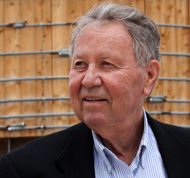 By ROGER SNODGRASS
By ROGER SNODGRASSLos Alamos Daily Post
Downwinders in Tularosa are making their voices heard this week, during a time when the city of Hiroshima, Japan has been a staple of the news.
A traditional Hispanic town with a population of about 3,000, Tularosa is not far from the Trinity Site, where the first atomic bomb test took place July 16, 1945.
For several years the people in the south-central part of the state have become increasingly aware of the price their friends and neighbors, families and forebears have paid in the nation’s nuclear saga. But unlike their counterparts in Nevada, Utah, Arizona and Idaho who were exposed to radiation from the Nevada Test Site, the people of southern New Mexico’s health claims began much earlier and have yet to be recognized.
Especially unfair for many, is the fact that Trinity Site victims have not yet been included in the provisions of the federal Radiation Exposure Compensation Act, dating back to 1990, which grants a $50,000 award to downwinders who contract specified diseases thought to be caused by fallout from nuclear testing.
The downwinders of Tularosa were largely forgotten for another 20 years. That’s when a comprehensive 10-year study was published on radioactive and hazardous materials released into the environment by Los Alamos National Laboratory from the 1940s through the 1960s. One of the study’s “major findings,” was about unacknowledged exposures at Trinity Site. The terrain around the test site and the weather conditions at the time spawned “hot spots” in populated areas north and east of the tower where the plutonium bomb, nicknamed “the gadget,” was launched.
“Radiation levels near some houses were almost 10,000 times the level currently allowed in public areas,” the report stated. “Nearby residents were not warned before the 1945 Trinity blast or informed of health hazards afterward, and no residents were evacuated.”
The rural population lacked running water, relying on cisterns and holding ponds. The water supplies were contaminated, as was fresh milk from goats and cows. Witnesses at the time reported that ash from the test fell for a couple of days. People thought it was snowing.
“I’m a cancer surviver,” said Tina Cordova, who was born and raised in Tularosa. Now the president of a construction company in Albuquerque, she is a cofounder of the Tularosa Basin Downwinders. “My father had three cancers,” she said, adding that he had no cancer risk factors, other than his environmental exposures over time. These are familiar stories in her community.
“There’s an entire generation that’s dying now, people who are in their 70s, my father’s generation,” Cordova said, adding that New Mexico’s full congressional delegation supports an amendment that has stalled in a Senate committee for six years.
“I’ve been told there is just no money for this, and I say that’s not a good answer,” she said. “Trillions are spent on defense. What about a government that poisons its own people and walks away?”
Asked for comment, Sen. Tom Udall, D-NM, said that the suffering of the victims in Hiroshima has long been recognized, but not the sufferings endured by the victims of the Trinity blast in New Mexico.
“I have seen first-hand the pain and disappointment that generations of New Mexicans have borne over 71 years,” Udall said. “The residents of Tularosa deserve recognition from their government and coverage under the Radiation Exposure Compensation Act.” He vowed to continue the fight for passage of the RECA Amendments Act in Congress.

